Over the years, football has learned a lot from other sports in different areas of the game, and I have already talked about the influence of transferable skills available between basketball and football. One sport which is difficult to compare to football is American football, with the dynamic, flowing, open nature of football contrasting to the very structured, and more fixed nature of an American football game. Football (or soccer to some of you), is a highly complex, dynamic environment which is far more open and requires far more random decision making, but, thankfully for this analysis, one aspect of football happens to come away from this slightly, and that is set-pieces.
Set plays are focused more on predetermined movements and require less in-game decision making, so the transfer between them and plays in NFL is obvious. Both sports are invasion games, and so, from an offensive point of view, teams in both sports are looking to move the ball forward towards a target from a set position. From a defensive point of view, teams in both sports can set up man or zone orientation around the opponent in order to protect the target and stay with the opponent. It is these similarities which allow transfers between sports to be made, and within this tactical analysis, I will examine how individual skills from American football can be used to benefit set-pieces, with this article focusing on offence and wide receivers.
Wide receivers and individual skills
A massive part of set-pieces which is often overlooked is the individual skill of one player at set-pieces. The basic idea offensively from a set-piece is to get away from a marker to get in a position to score, but there are various individual qualities which allow players to be better at this than others. Similarly, for a wide receiver, their aim is often to create separation from a marker to get into a position to catch the ball, which is the same concept of receiving a delivery from a corner.
There are a number of ways to create separation from a marker, and the first one we will talk about is the use of steps and changes in direction. Many offensive players, even at an elite level, start and end their run moving in the same direction. This offers no disguise on the run and is the simplest way of reaching a specific area, but it is also the easiest to defend against. Wide receivers in the NFL rarely start and end the play running in the same direction, and they will often change direction multiple times.
We can see the advantages of doing this in this play below. Wide receiver Antonio Brown starts with a straight run before making a (slant) run inwards at a diagonal. His marker is already deeper and so there is some natural separation, but this run inwards, as well as his head position, feints that he will receive a short throw. As a result, his marker looks to close the space and get closer.
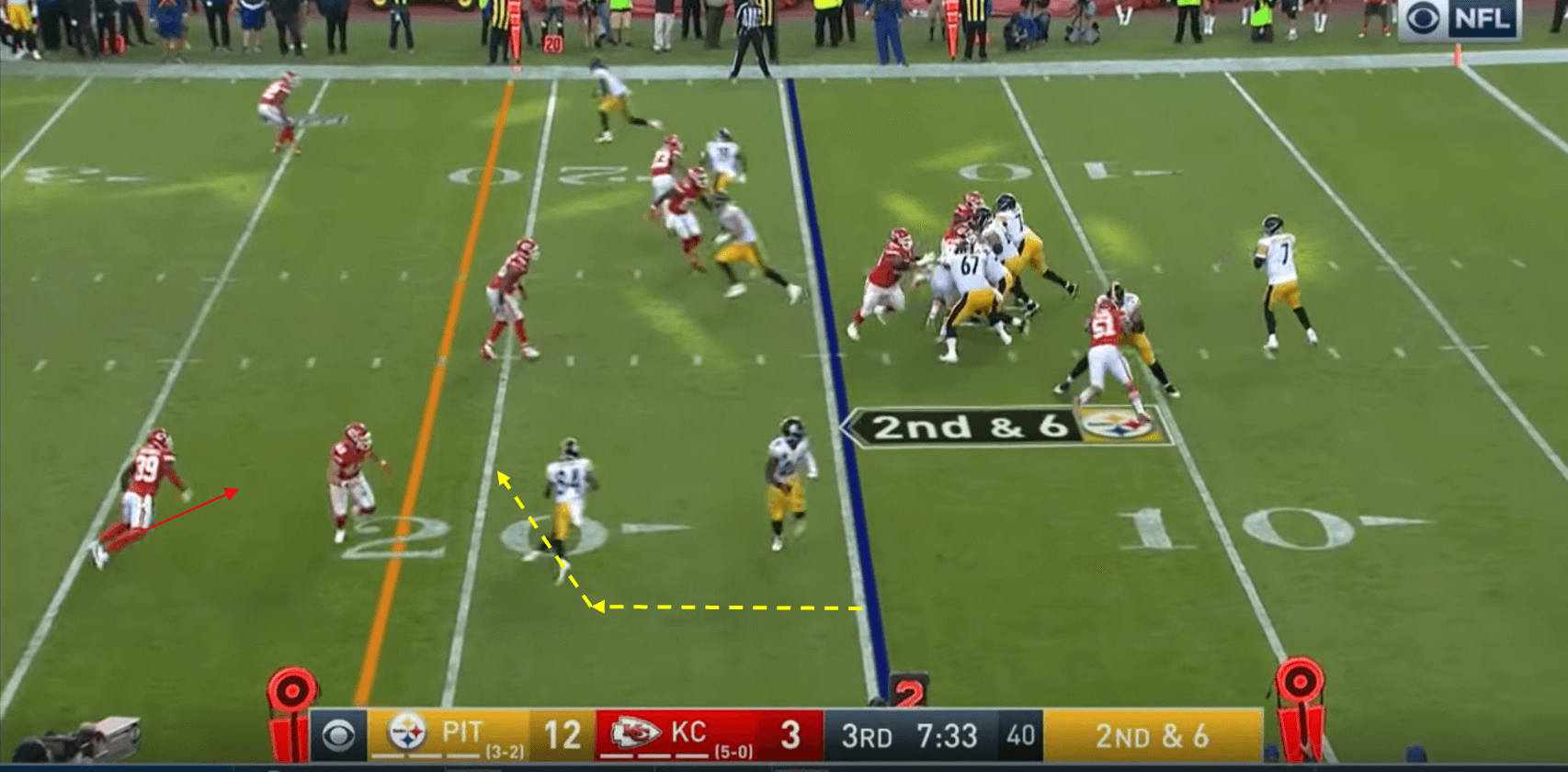
Brown’s marker moves forward to get closer, and, as he does, we can see Brown makes an explosive step off his right leg to change direction. Brown both creates and manipulates the defender’s motion, and then uses the defender’s momentum against him to run into the space behind him. We see while Brown is making that explosive movement, the defender is moving forward and doesn’t even have both feet planted.
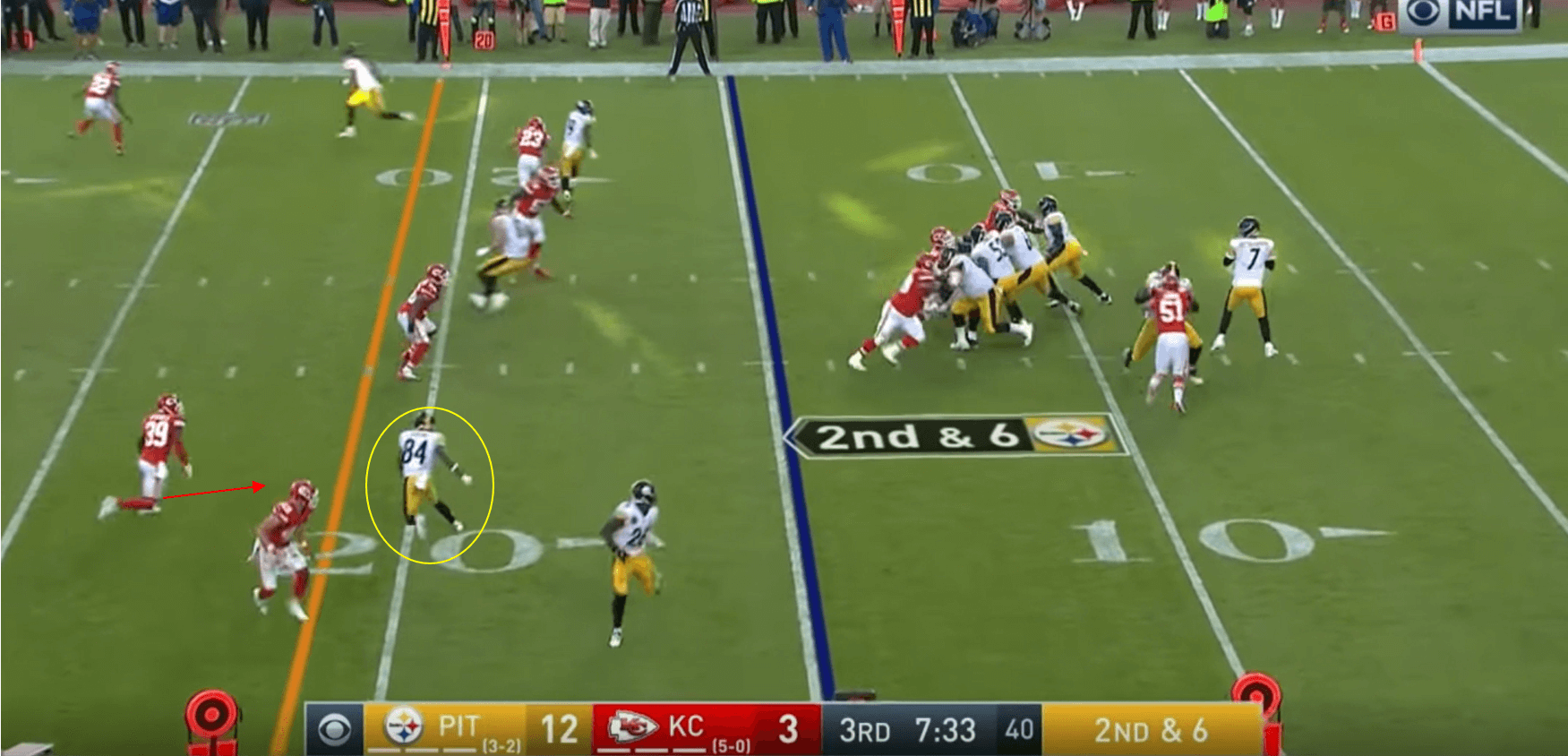
Brown is able to then create massive separation from his marker, which we can see here. His marker’s forward momentum means he cannot stop and react quickly to Brown’s run, so the Pittsburgh wide receiver can take advantage and make a catch in the space in behind.
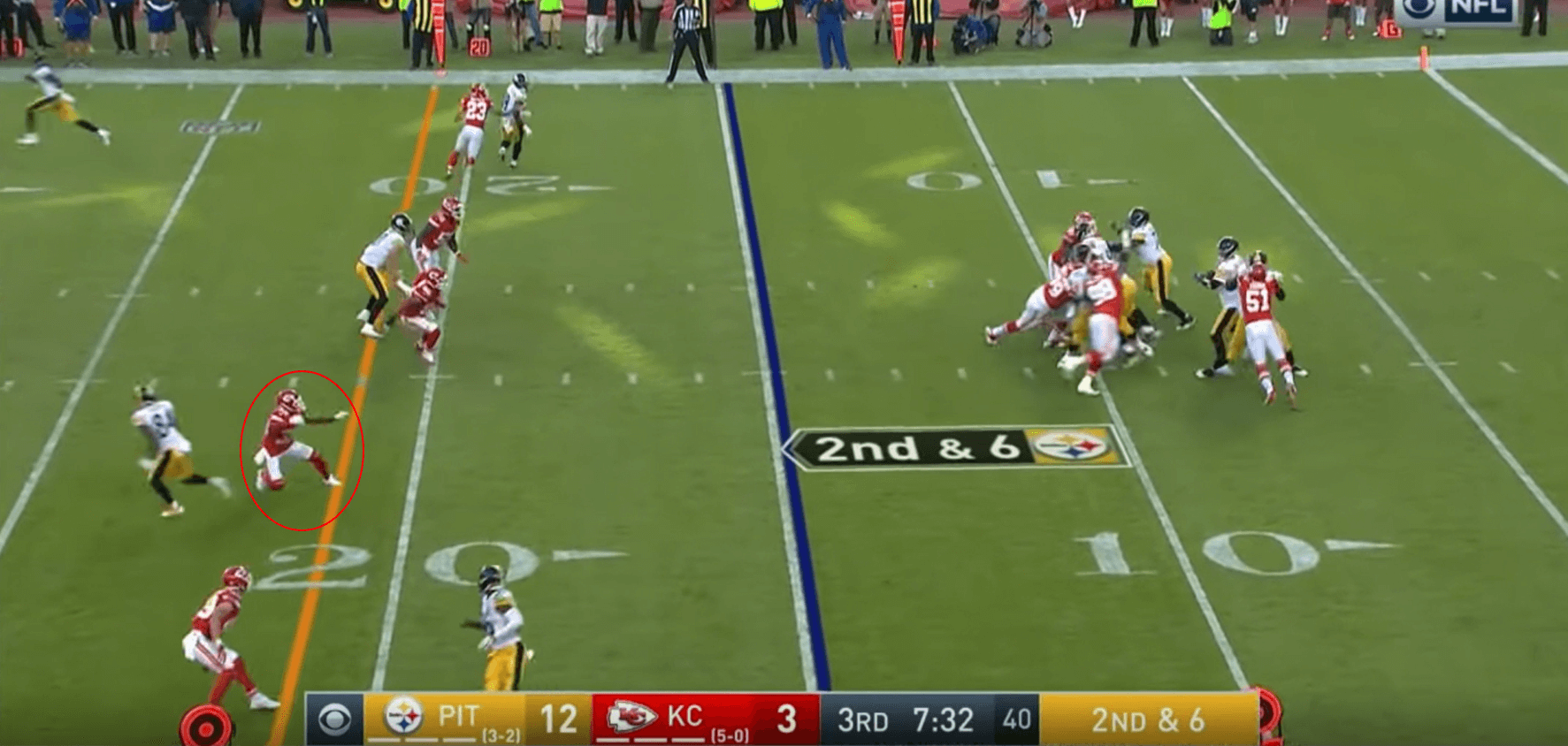
This sequence below, again from Antonio Brown, is a good example of changes in direction allowing for separation to be created. Here his marker starts by cutting off an outside run, showing him the inside. Brown makes an initial movement towards the inside and his defender follows.

After making the movement inside, Brown again uses his explosive step and bounds off his left leg to go back to the outside. The advantage behind any change in direction is that the opponent has to react to it, so there is always a momentary period where the opponent’s momentum is going the wrong way. This is what creates separation or imbalance. We can see Brown changes direction and goes on the outside. His defender is not balanced enough to react and loses his footing.

This example from Juju Smith-Schuster is a good example of manipulating the opposition with your steps. Smith-Schuster runs his route and ends up 1v1 with his marker who is protecting the end zone. We can crucially see in the first image, the wide receiver makes a step vertically towards the end zone, bouncing from his left to his right to make this vertical movement. This vertical movement by Smith-Schuster feints that he will make a straight run towards the end zone, so his opponent takes a step backwards when Smith-Schuster feints this move. As we can see on the second image though, within one step, Smith-Schuster is looking to move to the space on his left rather than making a vertical run. Schuster then bounces from his right foot and transfers his weight to allow him to sprint into this space to the left. His marker is still moving backwards and doesn’t read this.

As a result of this little feint, Schuster is able to create enough separation and can catch the ball and reach the endzone for a touchdown. Without that step feinting a vertical run, this separation would not be possible.
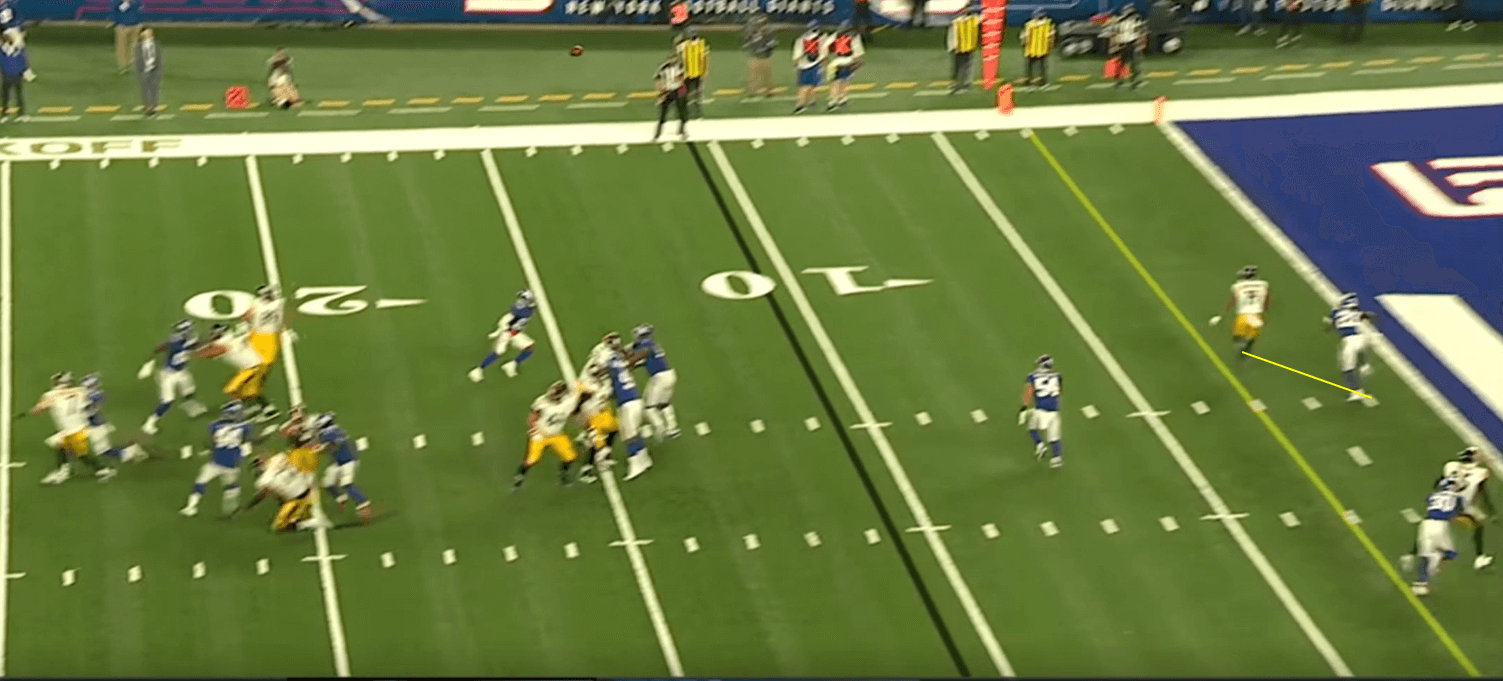
Stopping and starting is also a good way of creating separation from an opponent, as again it disrupts the momentum of the marker. We can see an example of Antonio Brown using this here, as he initially makes a run inside before stopping. As he stops, we see his marker steps down and transfers his weight to allow himself to stop also.
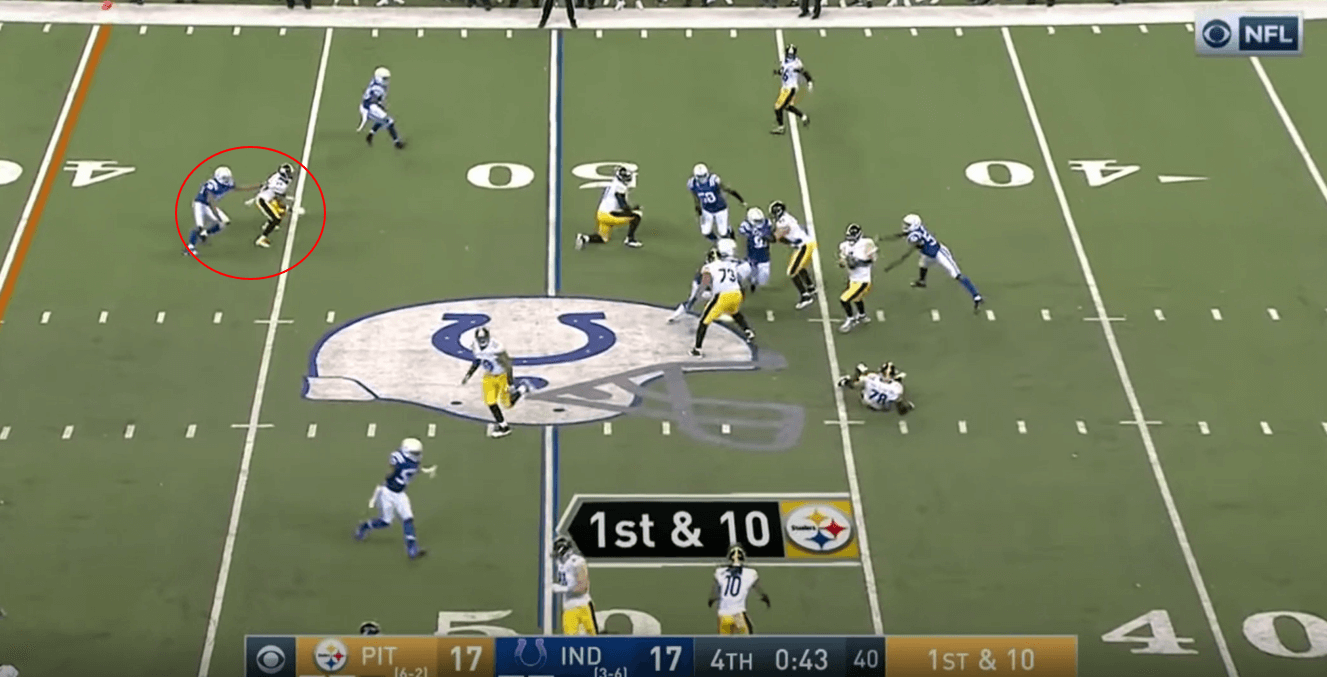
When the defender shifts his weight to stop, Brown can again explode back into motion and move into space. The defender’s weight is shifted and so he has to react and shift his weight again, so this delay allows Brown to create separation.
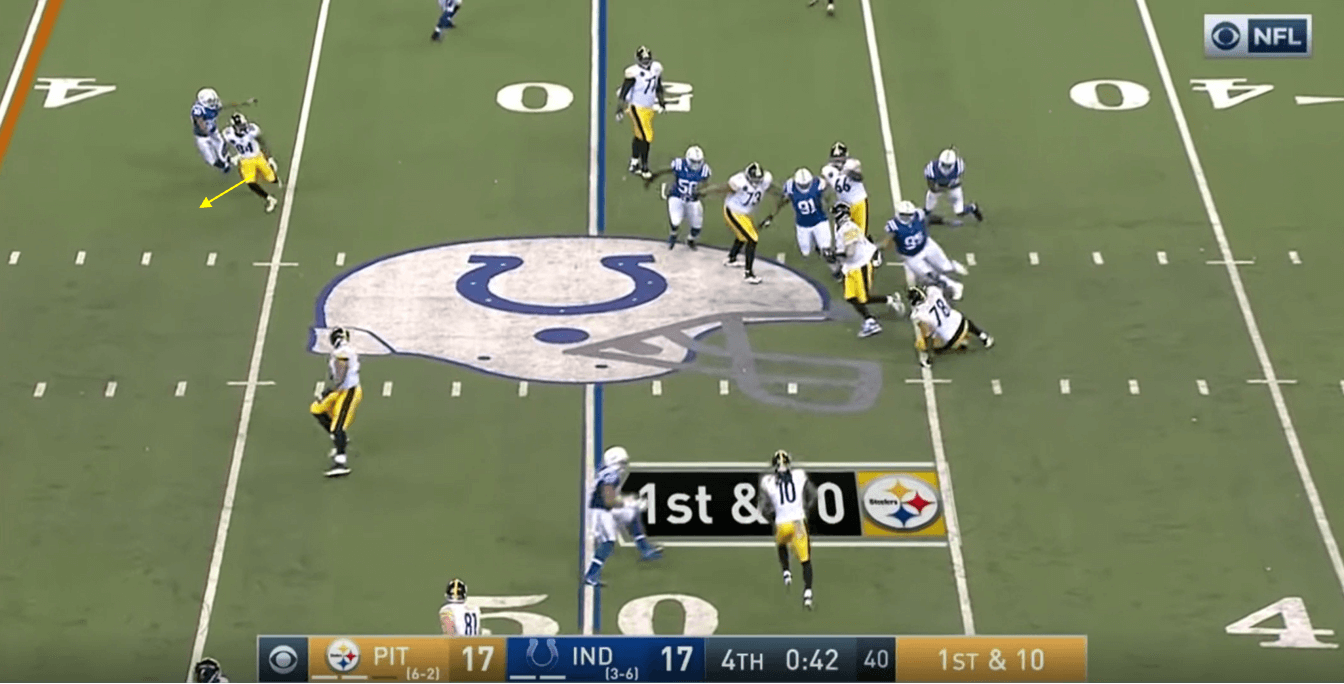
There is so much detail and biomechanics around how wide receivers create separation, with areas such as head and chest positioning affecting how efficient receivers are at creating separation. The timing element is also vital. The sequence above is a good example of that, as those contrasting steps to the opposition defender have to be timed, otherwise the movement can be tracked and read more easily. I have a bank full of these kinds of movements but these are simply a few examples to show and I will likely write another article showing how these movements can be coached to footballers, which brings us nicely onto our next section.
How can these movements be used from set-pieces?
Having identified a few skills that can be used, I’ll now show a few examples where these basic ideas show themselves in football from set-pieces. Before this though, one key difference between American football and football that needs to be mentioned is the vision of defenders. In American football, the ball is always in front of defenders at the start of the play, and so when stood facing forward they can see the whole picture. For defending teams on corners, they often face markers directly or face the corner taker, and so, due to the angle that corners are taken from, it is difficult to keep both the ball and marker in your vision. This side on stance can create an advantage for attackers and can make changes in direction even more useful.
The first example follows on directly from the play seen above, where a stop and start motion allows for space to be created. A Hoffenheim player makes an initial simple movement towards the back post while marked. If we look at the body positioning of the defender, he is solely focused on the defender and the space he is running into and does not have the flight of the ball in his eyeline.
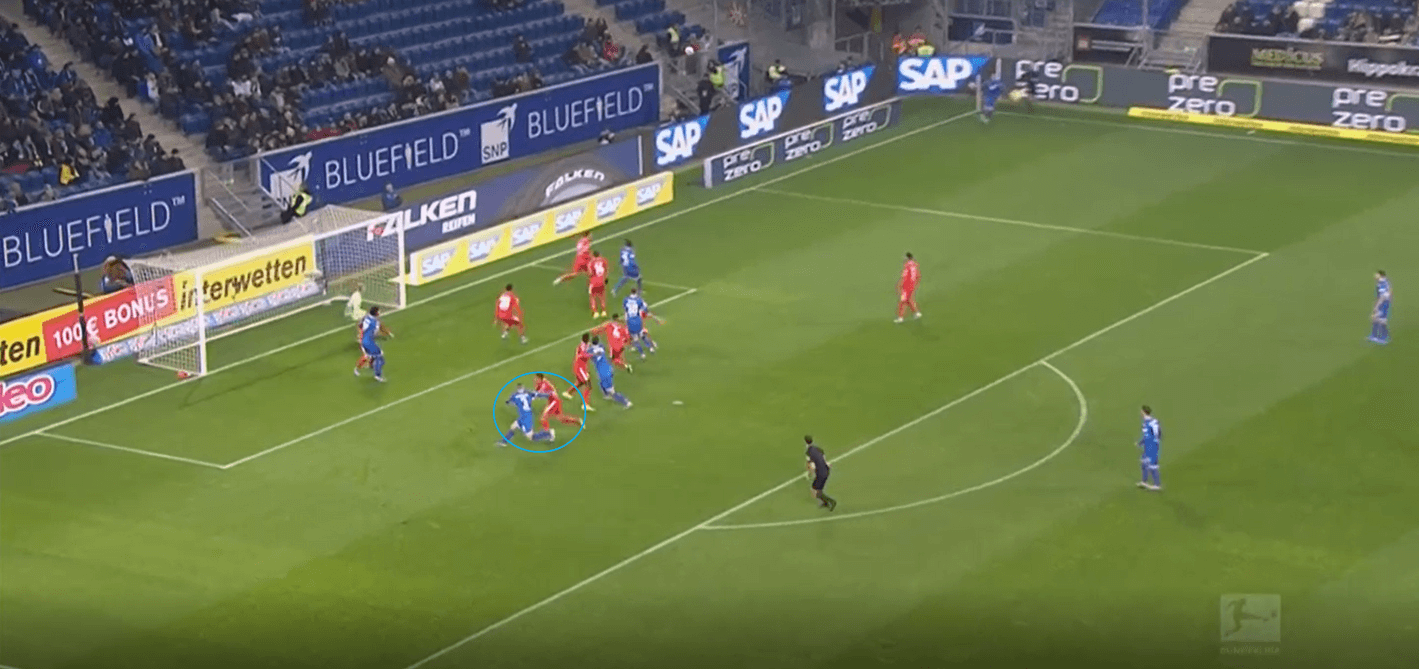
The Hoffenheim attacker (Pavel Kadeřábek) recognises this, and so plants his foot to slow down. The Mainz defender isn’t watching the flight of the ball or the attacker very effectively. Because of the urgency of his run, he cannot slow down and react to the attacker’s change in direction. As a result, when the attacker stops the defender keeps going forward momentarily and separation is created, meaning Hoffenheim get a free header on goal.
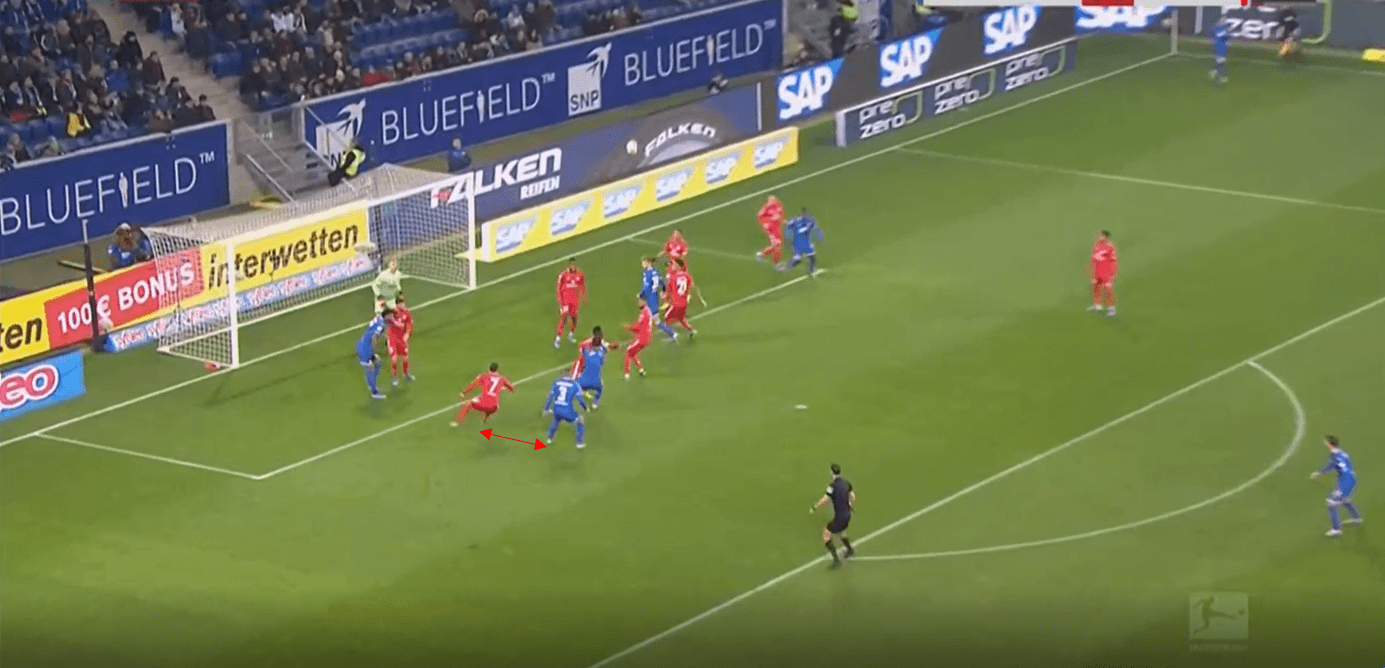
Antonio Brown ran a very similar route against the Bengals which we can see here, where he initially runs at a diagonal before planting his feet and shifting his weight to his back foot dramatically. We can see as he does it here his marker continues to move forward, and so naturally separation is created in the same way as we see above.
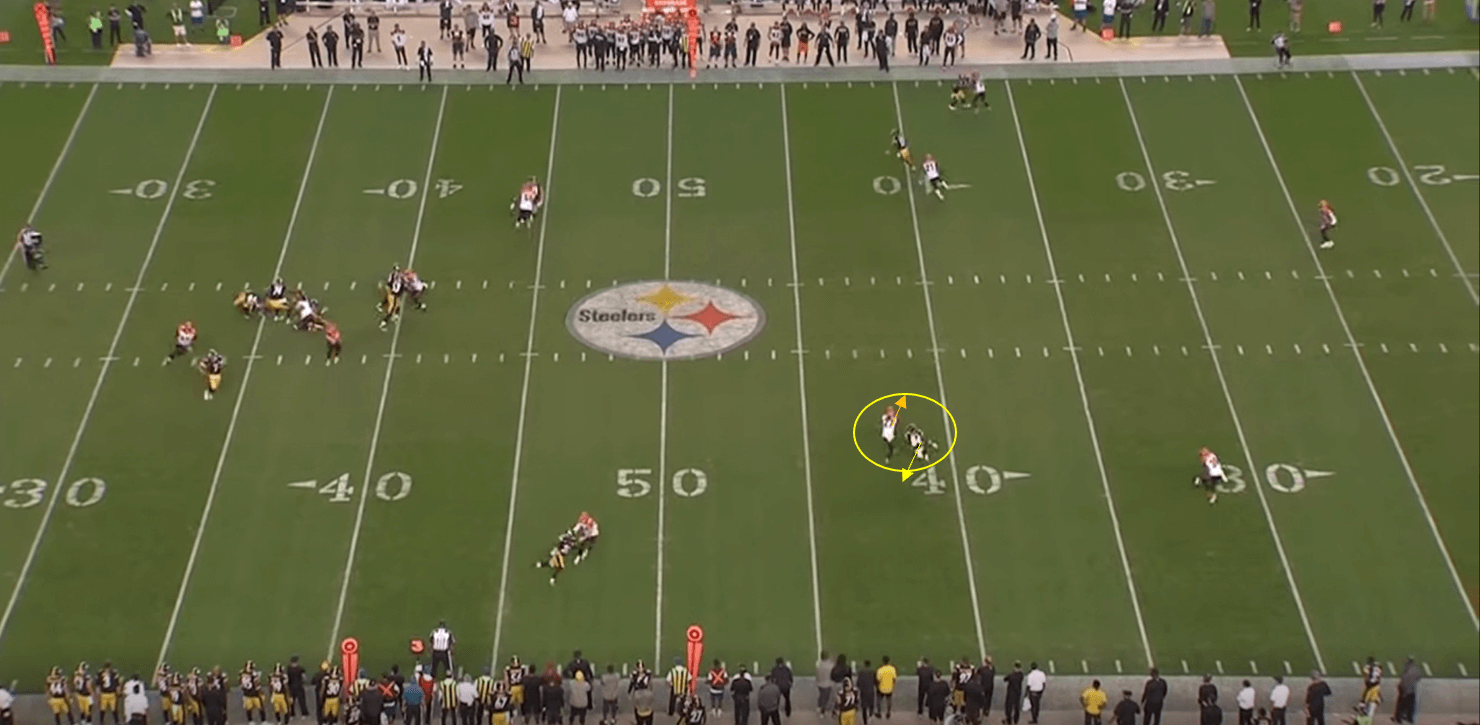
Our next example comes from probably the best individual attacker from set-pieces in the world in Real Madrid legend Sergio Ramos. We see Ramos initially makes a run towards the near post and attracts the attention of his marker. Ramos moves towards the near post before making a larger step with his left foot. Ramos uses this left foot for an explosive movement in the opposite direction towards the central area/back post, and so he pushes off from his left foot.
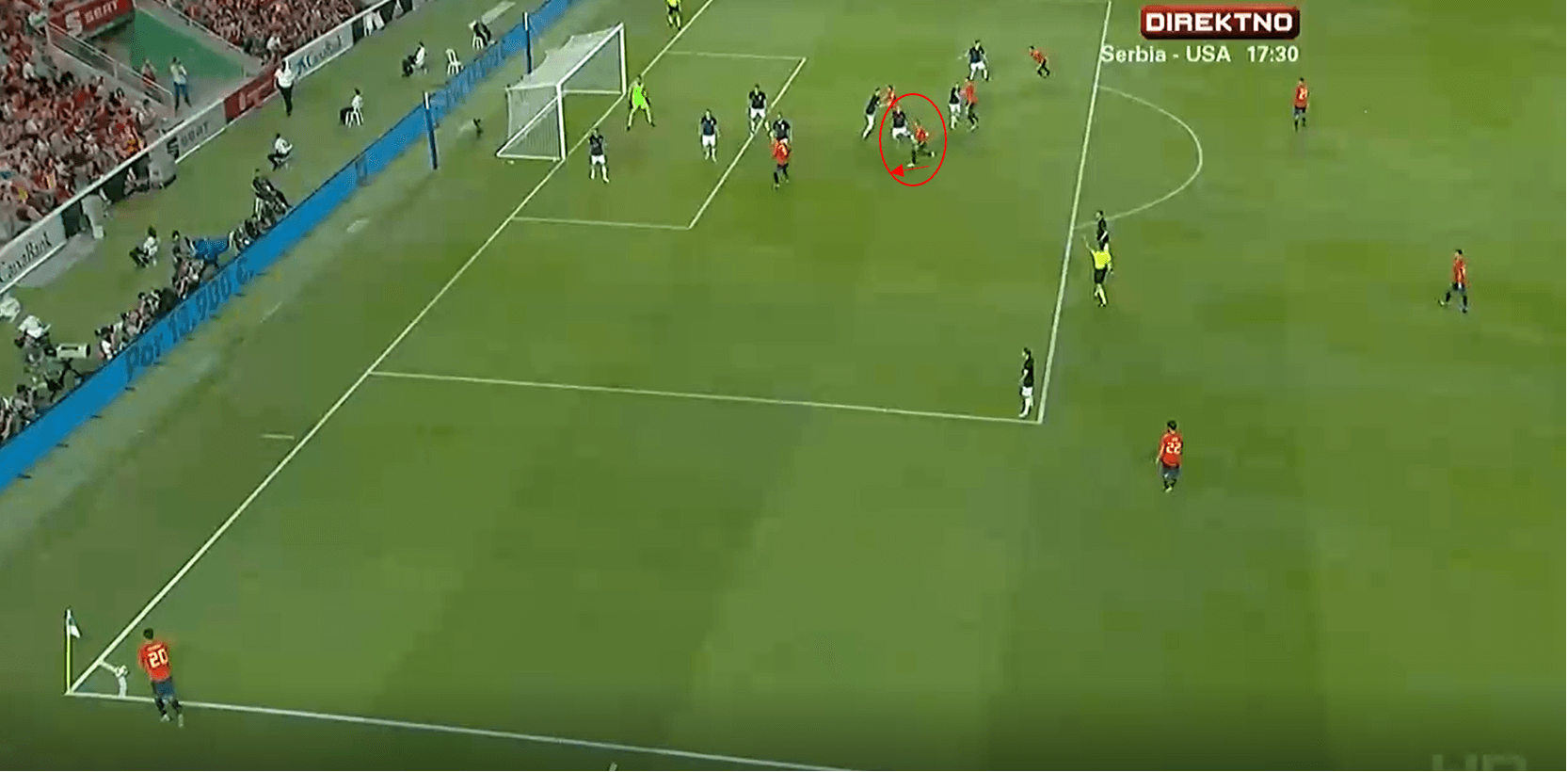
As a result, when he pushes off from his left foot, his marker is still moving forward towards the near post zone. We can see here the large amount of separation Ramos is able to create from his marker.
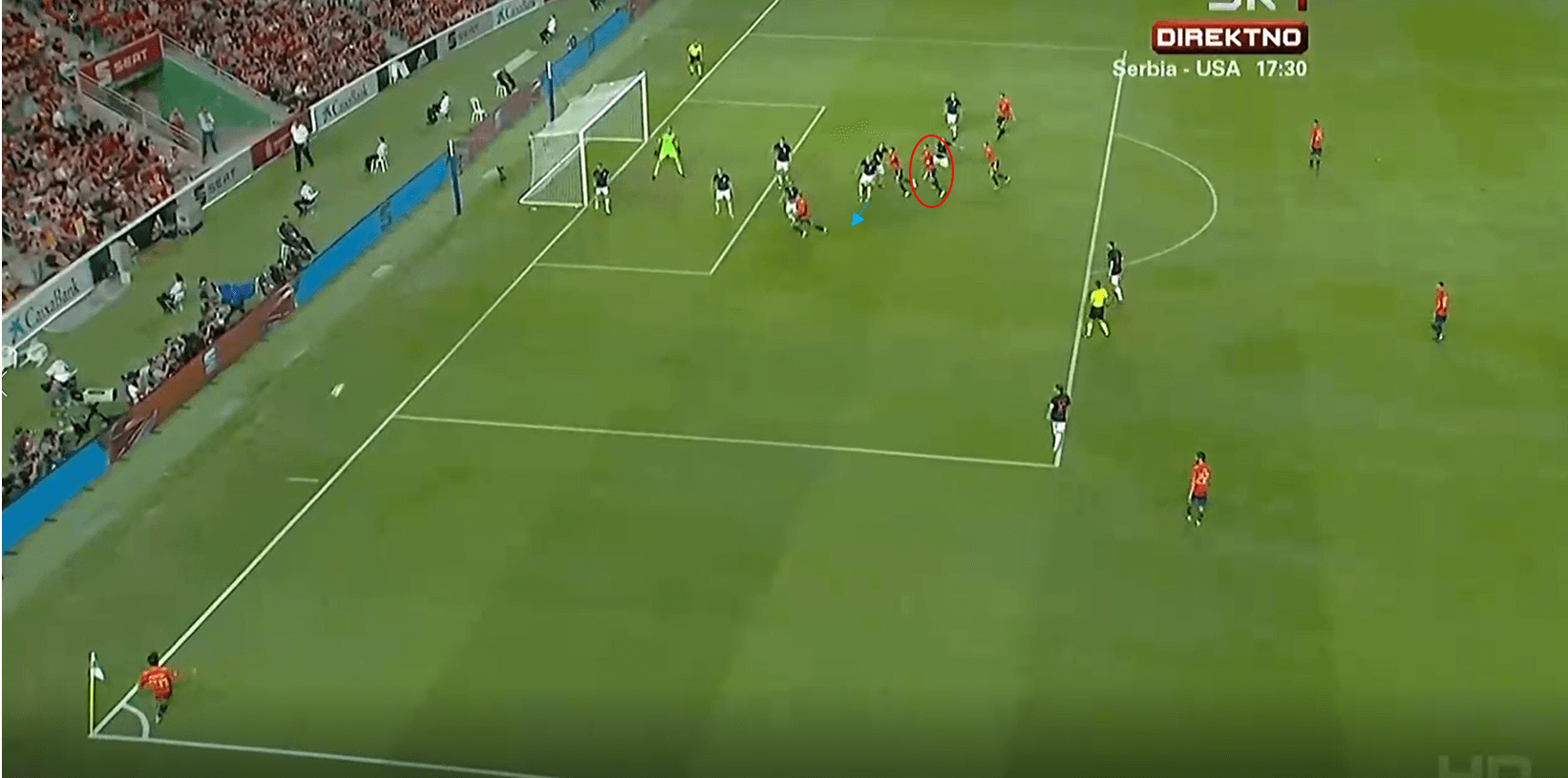
A common movement we often see in successful set-pieces is something I call a slip, where a player moves towards the ball before then slipping behind his marker into a position to head the ball. We can see an example from the Bundesliga again here with Union Berlin, where the attacker initially starts a run more towards the front post, before then arcing it to run behind his marker. His initial movement towards the front post means his marker steps forward to try and read the movement.
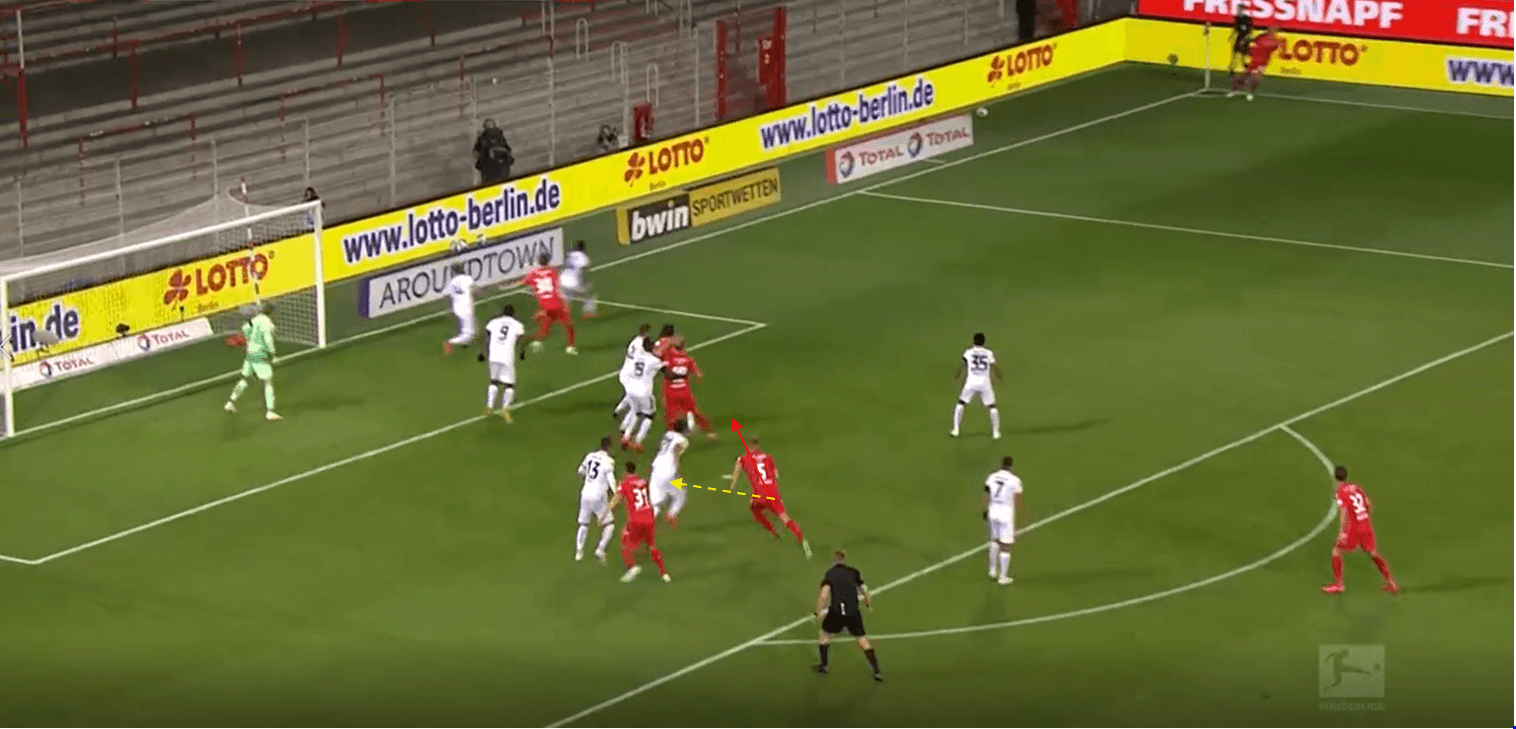
With the defender taking those extra steps in a forward direction, the attacker can make a little cut, or slip run, in behind him by changing direction and just bouncing off their far leg. As a result, they can get on the far side of their marker and have a better chance of winning the header.
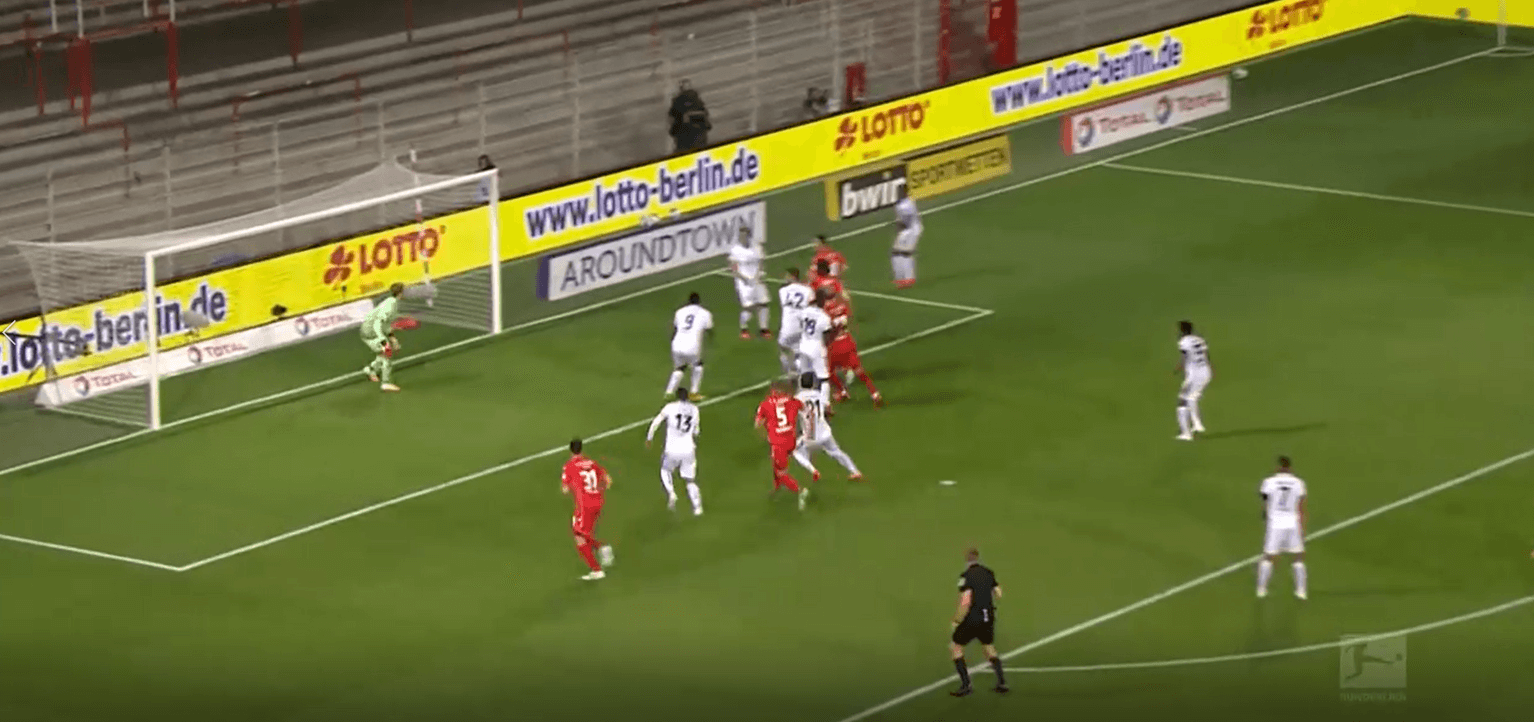
Again, in this example, we can see that the defender cannot actually see the marker at this point and is instead solely focused on the ball. This brings about an important coaching point of when a player should change direction, and the answer is when the ball has just been kicked.
We can see an example below involving Liverpool, who start deep to create maximum separation from markers. Before the ball is kicked, Van Dijk runs towards the near post and his marker (circled), who is already separated from him, tries to track his run to the near post. The Newcastle marker here is already not looking at Van Dijk and is solely focused on the ball. Lascelles simply looks at Van Dijk initially, sees his initial run and tries to match that run straight away.
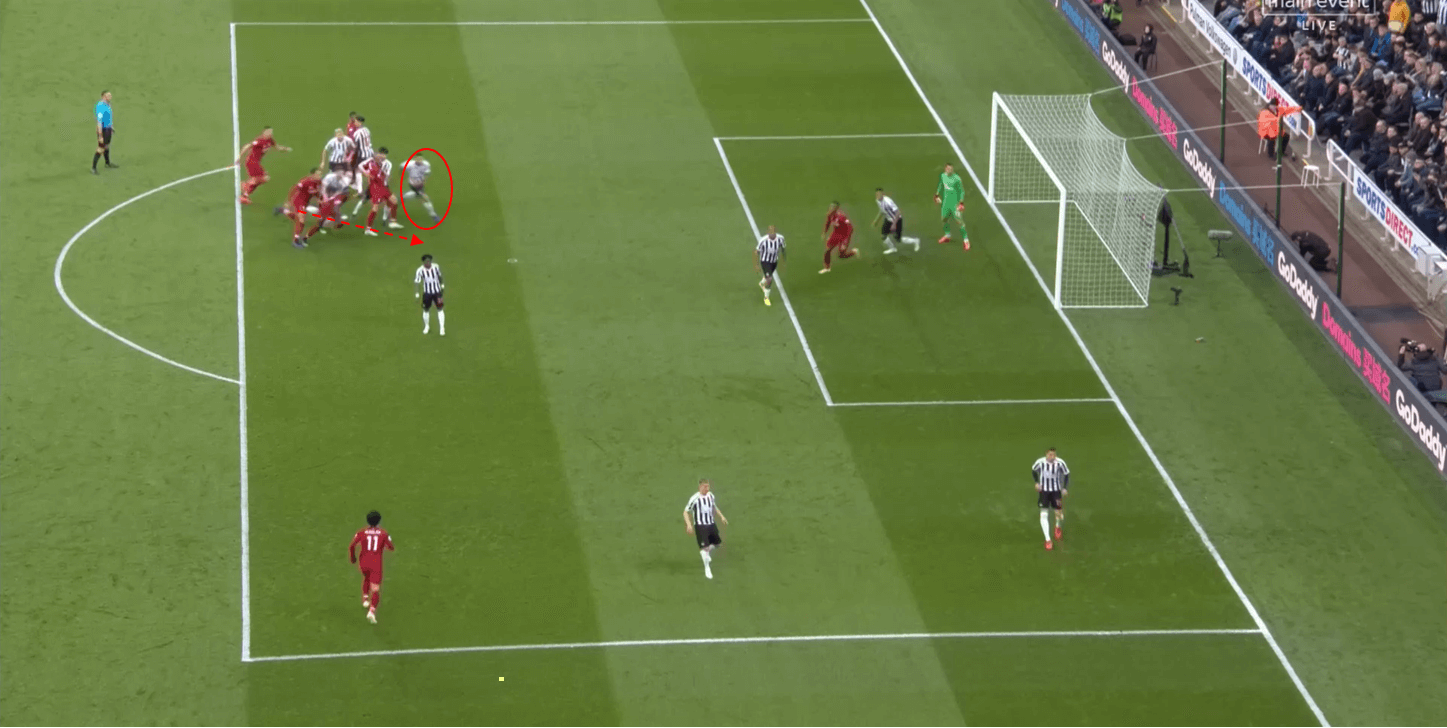
When the ball is kicked though, Van Dijk changes the course of his run with a little slipped movement that allows him a more central run. If we look at his marker, he now more or less has his back turned to Van Dijk and is still thinking he is tracking Van Dijk’s run.
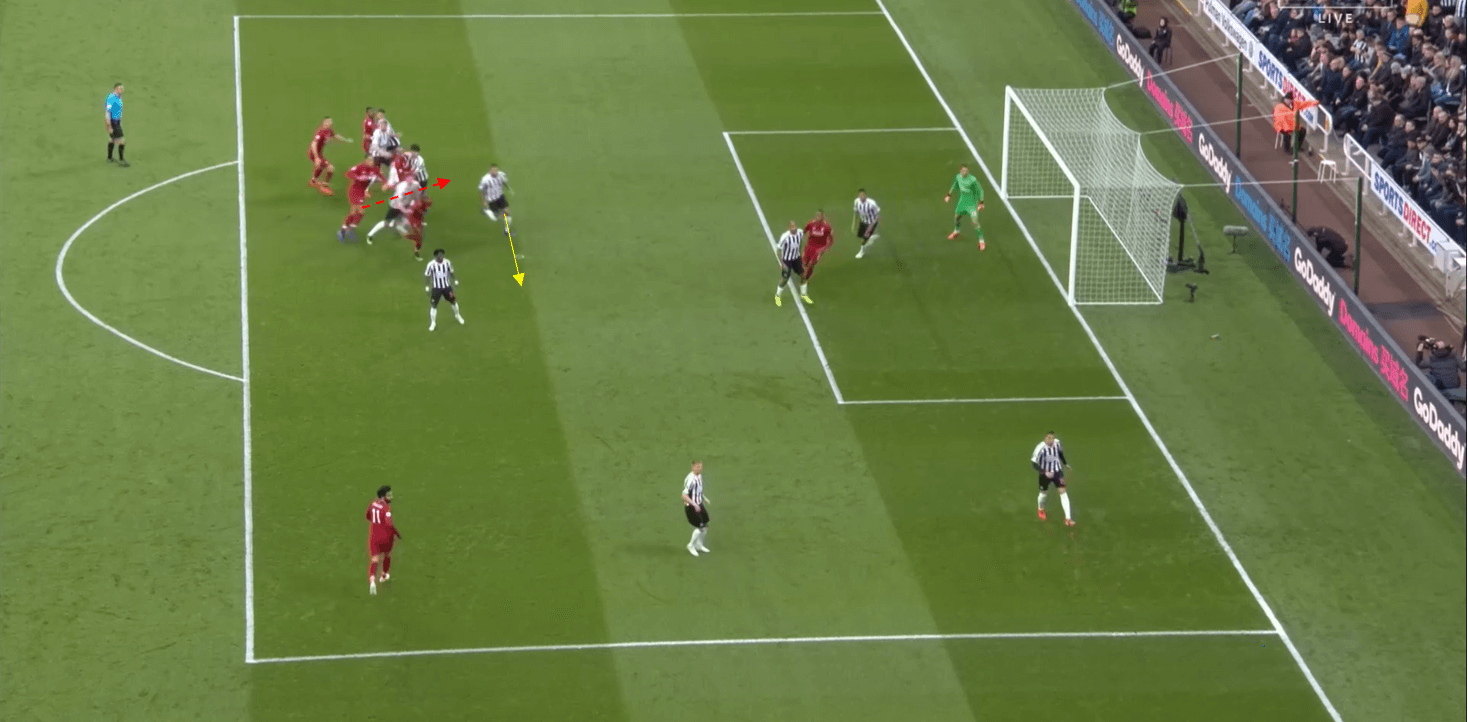
Therefore, when the ball is closer to being delivered, we can see the massive amount of separation created between Van Dijk and his marker, leading to a Van Dijk goal. The initial spacing and separation helps Van Dijk here and causes some of the reaction by Lascelles, but it offers a good example of some of the disadvantages of trying to track a ball and a man at the same time.
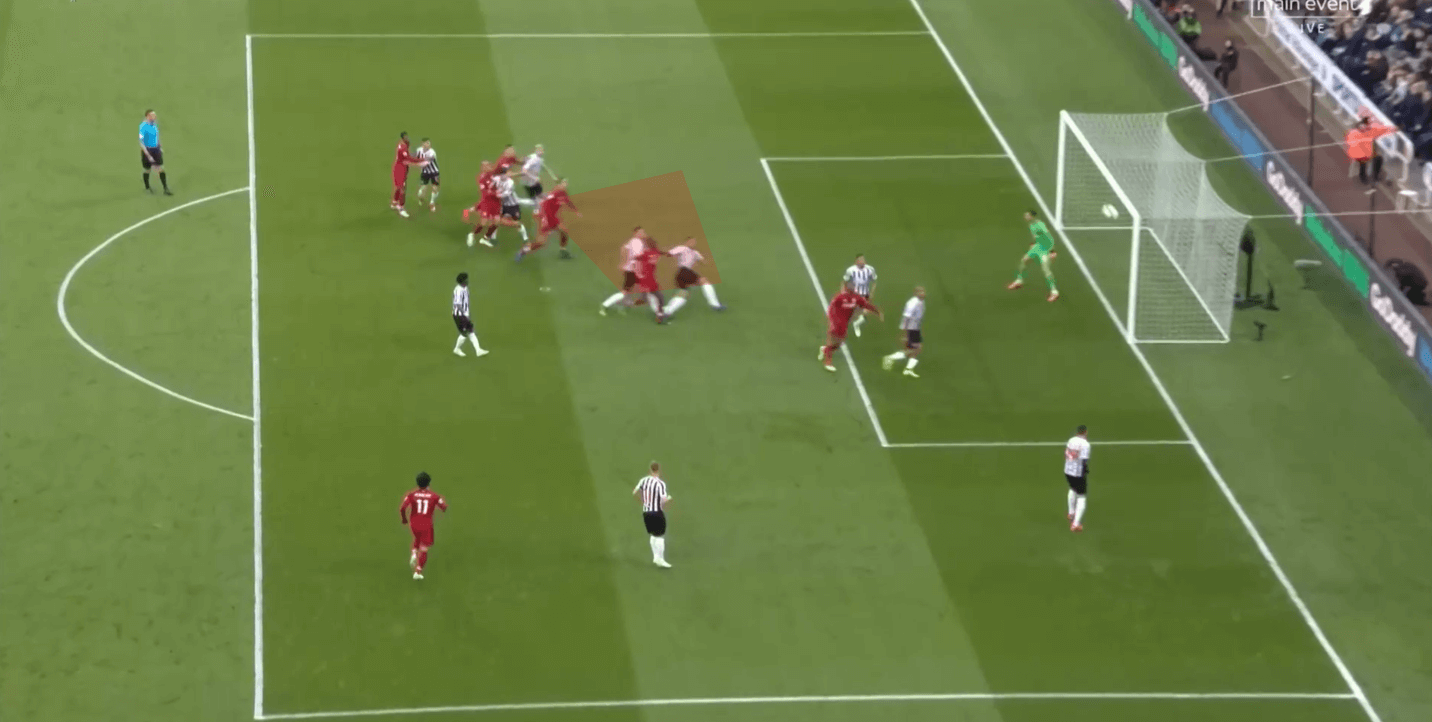
Many of the plays mentioned involve man orientation and 1v1 situations, so it is important that if a team looks to utilise this that they have the correct spacing to allow it to happen. We can see an example below of a potential play, where the back post and central areas are the most occupied areas by the attacking team. A player starts deep at the near post in order to create separation and initially makes a movement towards the front post. His marker will match that run and move out diagonally, which triggers the attacker to feint moving into more of a central position with a step off his right foot. The defender again should react to this and will begin to shift his weight to cover this inside lane. When he does this, the attacker should then make his final explosive movement towards the near post again. Those earlier movements disrupt the balance of the defender and allow the attacker to create separation. One player higher up can then move to occupy or block zonal players if needed.
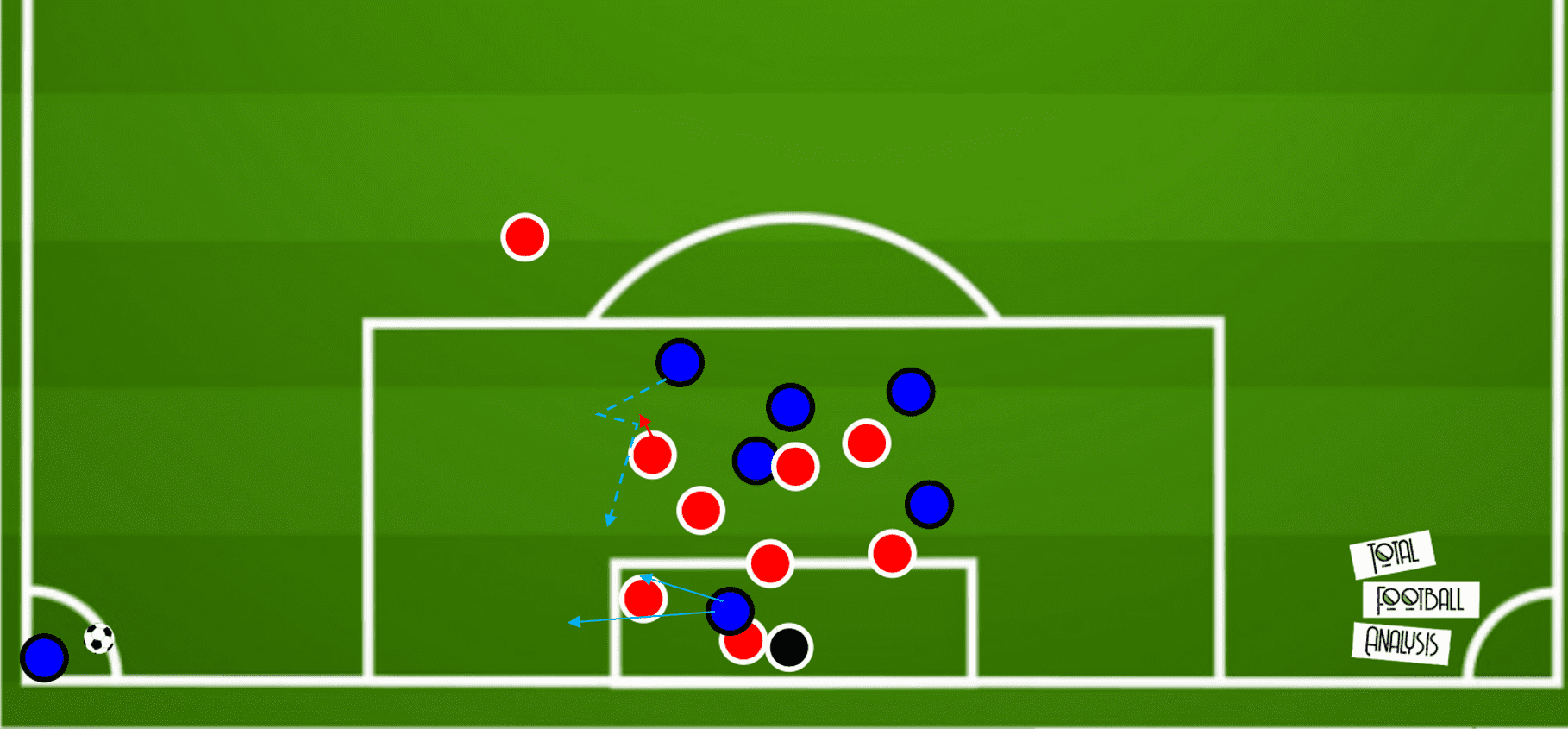
If players are taught these kinds of individual skills regarding misdirection, transfer of weight etc., then these movements don’t need to be routined. Instead, an end goal is tailored to the play and that can be signalled by the corner taker. For example, one hand up in the air can mean the delivery is going to the front post zone, so it is the job of the target player to dismark the opponent and arrive into this area ready to head the ball. They need to know where to go, but they don’t always need to plan exactly how they are going to get there.
Conclusion
This set piece analysis has focused on the individual skills wide receivers possess and how they apply these skills and individual tactics to their role within American football. There is a large area for transfer between dismarking and creating separation in both sports and, in the subsequent parts of this series of articles, I will attempt to look how these may be coached at a very technical, detailed level. This is more suitable to video analysis, so it may be done in this format. The series will also give examples of actual plays or routines that NFL teams use, as well as looking at how these can be transferred into all set-pieces within football.





Comments